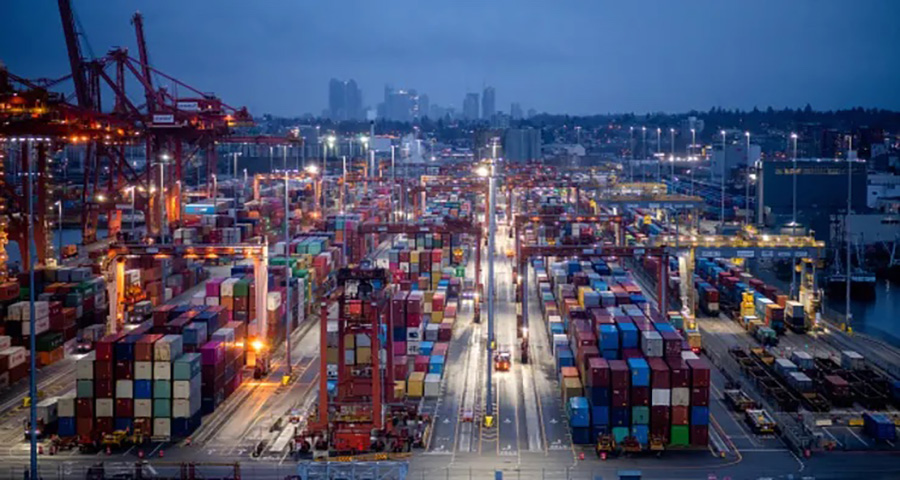Tariff Planning Requires Product Transparency
KEY POINTS
- U.S. tariff uncertainty complicates Sourcing budgets.
- Targeted countries plan retaliatory tariffs.
- Health systems use SRS tariff reports to gauge exposure.

Tariff threats put Sourcing budgets into question.
Forecasting the cost of patient care supplies is increasingly hazardous due to uncertainty over which countries and product categories will be the target of threatened tariffs. The Trump administration has threatened steep and broad tariffs for the USA’s top three trading partners Mexico, Canada, and China, BRICS countries like India and Brazil, and general tariffs on other countries. At the same time, some advisors to the Trump administration are advocating narrow tariffs targeting critical products while others urge tariffs steep enough to generate significant federal revenue. At this point, no one knows what will be tariffed, when, and how much.
This uncertainty has healthcare executives urgently evaluating manufacturing locations of high-spend product categories as well as alternatives from the USA. Health systems use SRS to evaluate tariff exposure by listing the products made in any country (see the “Products by Country (Tariff Risk)” report in the Prevent dashboard). In addition, health systems bring product locations into business reviews by running the “Products Sites and Risks” report for any supplier or distributor (Prevent dashboard > click supplier > click report icon).
Meanwhile, the Biden administration’s Section 301 China tariffs went into effect on September 27 ranging from 25% – 100%, with some categories increasing January 1, 2025 and January 1, 2026. These tariffs apply to healthcare products like syringes, needles, respirators, medical gloves, and facemasks, with tariff rates escalating as shown in the table below. Health systems use SRS to evaluate exposure to these existing China tariffs by running the “Products Subject to China Tariffs” report (SRS Prevent dashboard).
| Product Group | New Section 301 Tariff Rate | Application Date | Previous Section 301 Tariff Rate |
| Surgical and non-surgical respirators and facemasks (first increase) | 25% | September 27, 2024 | 7.5% |
| Syringes and needles (excluding enteral syringes) | 100% | September 27, 2024 | 0% |
| Rubber medical and surgical gloves (first increase) | 50% | January 1, 2025 | 7.5% |
| Disposable textile facemasks (first increase) | 25% | January 1, 2025 | 7.5% |
| Disposable textile facemasks (second increase) | 50% | January 1, 2026 | 25% |
| Surgical and non-surgical respirators and facemasks (second increase) | 50% | January 1, 2026 | 25% |
| Enteral syringes (exempted in 2024 and 2025) | 100% | January 1, 2026 | 0% |
| Rubber medical and surgical gloves (second increase) | 100% | January 1, 2026 | 50% |
In anticipation of potential U.S. tariffs, global trade dynamics are shifting rapidly. As factories rushed to fulfill orders ahead of potential tariffs, China saw exports surge 10.7% in December, driving record trade volumes. Meanwhile, China, Canada, and Mexico plan retaliatory tariffs on U.S. goods.
In sum, “You should take action and review your supply chains. Identify where your goods are sourced from and have alternatives. And you should review how your goods are classified”, says Adam Lewis, President of Clearit Customs Brokers.
For additional information, see:
NPR, China’s exports in December up 10.7%, beating estimates as higher U.S. tariffs loom, January 13
Financial Times, Logistics groups move Chinese staff to help companies tackle Sino-US trade tensions, January 11
The LoadStar, Launch of new tariffs ‘a speeding train’, be ready, US importers warned, January 13
CNN, Canada is preparing to strike back hard with retaliatory tariffs if Trump starts a trade war, January 10
Supply Risk Solutions, Tariffs Push Manufacturers to Rethink Supply Chain Strategies, November 15
Supply Risk Solutions, Tariffs Spur Urgency to Understand Product Manufacturing Locations, November 11
Supply Risk Solutions, List the Products You Buy That Are Subject to China Import Tariffs, October 28
White & Case, United States Finalizes Section 301 Tariff Increases on Imports from China, September 17
Supply Risk Solutions, Biden Raises Tariffs on Key Chinese Imports to Bolster U.S. Industries, May 20